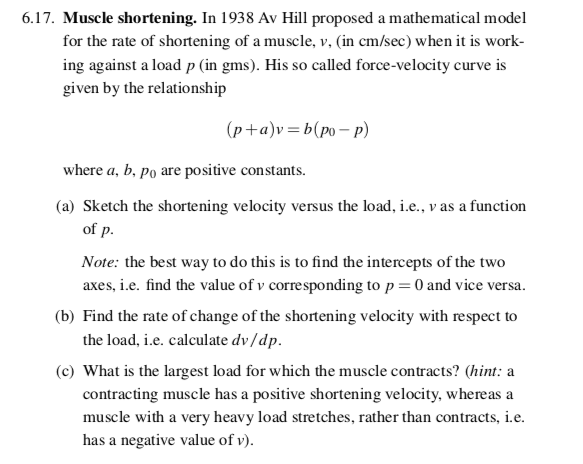Answered step by step
Verified Expert Solution
Question
1 Approved Answer
Can someone help me with this one? 6.17. Muscle shortening. In 1938 Av Hill proposed a mathematical model for the rate of shortening of a
Can someone help me with this one?

Step by Step Solution
There are 3 Steps involved in it
Step: 1

Get Instant Access to Expert-Tailored Solutions
See step-by-step solutions with expert insights and AI powered tools for academic success
Step: 2

Step: 3

Ace Your Homework with AI
Get the answers you need in no time with our AI-driven, step-by-step assistance
Get Started


